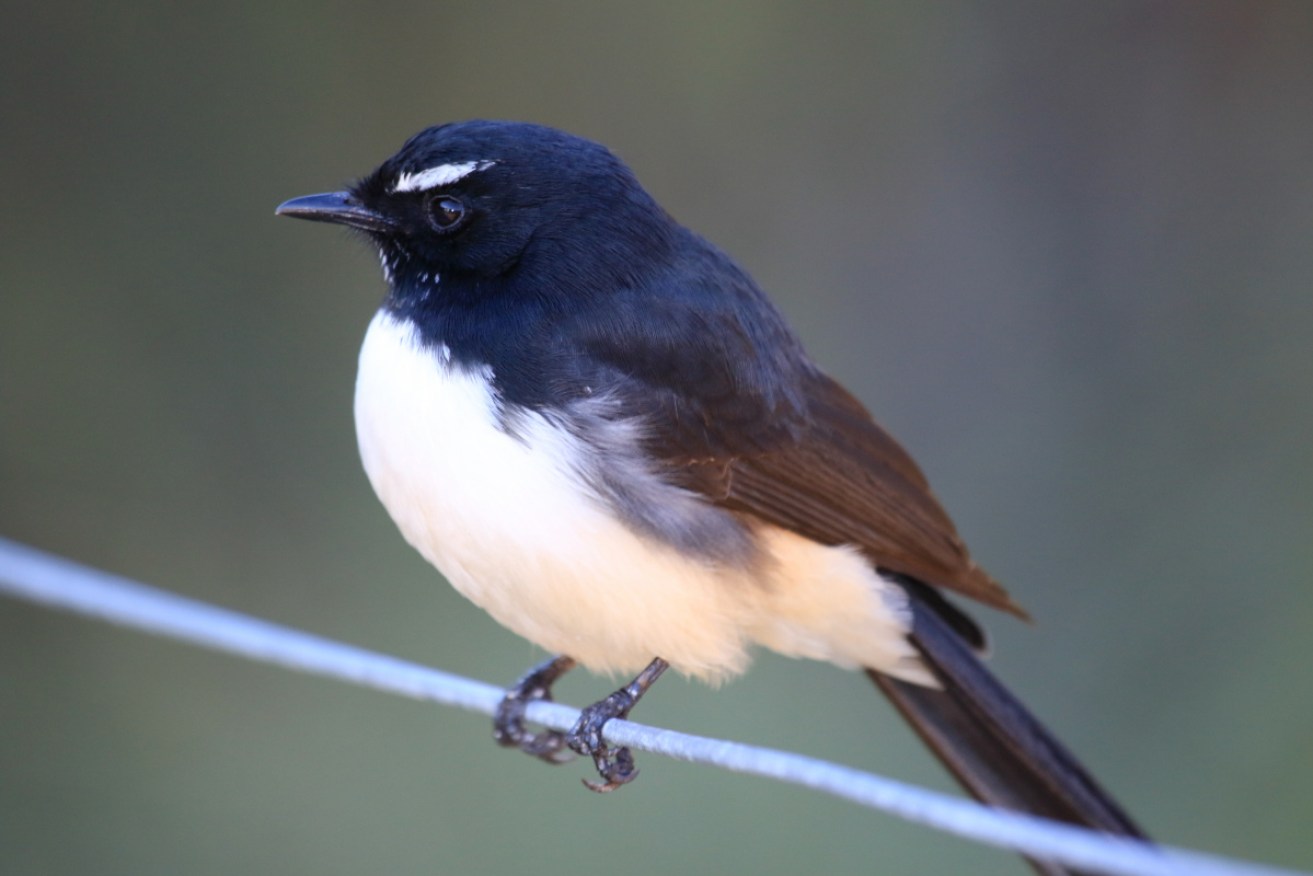True tales: Willie wagtails sing more intensely to the full moon


It was long rumoured willie wagtails sang to the moon. A new study has shown it's true. Photo: Getty
When colonial graziers first started adding sheep to the Australian landscape, they would have noticed that a busy black and white bird, with a pretty fantail and stark white eyebrows, would flit about the faces of livestock to get them moving.
The idea was to stir up insects from the grass.

The willie wagtails are known as the ‘shepherd’s companion’ as they are commonly seen around livestock. Photo: Getty
Indigenous people saw the same kind of behaviour between the bird and kangaroos.
This was the seemingly fearless and undeniably enigmatic willie wagtail, a bird subject to rumour and folklore.
As Ashton Dickerson, a PhD candidate with the University of Melbourne’s School of BioSciences, pointed out in an interview with me at The New Daily‘s podcast, some Indigenous peoples believed the willie wagtail “to be secret stealers and the harbingers of ill omens.”
Another has it that they sing most often when the moon is full.
Busting open folk tails
Willie wagtails, Ms Dickerson notes, are a diurnal species, meaning they are mainly active during the day. But, as it goes with at least 30 per cent of bird species, they also call at night. But is the full moon really when they are most tuneful?
“It’s always been folklore, it’s never been backed by science,” Ms Dickerson said. “I found that really interesting and I set out to test whether this story was true.”

PhD candidate Ashton Dickerson hunted through the night for willie wagtail singing spots. Photo: University of Melbourne
The first step: A lot of midnight field trips.
“I’d go out and search for these willie wagtails that were singing at night.”
Thankfully, she said, willie wagtails tend to sing from the same spot each night.
Once Ms Dickerson had mapped out where the wagtails were singing, she deployed recording units that are designed to be used outdoors for long periods of time. These were left in the song trees, programmed with automatic detection software. The recordings were triggered by the wagtail song.
In the study, conducted by Ms Dickerson – with Dr Theresa Brown and Dr Michelle Hall of the Urban Light Lab – wagtails were recorded over eight complete lunar cycles, in four rural locations across Victoria.
These recordings provided a record of song intensity from night to night. And as the folklore predicted, the willie wagtail sang most often when the moon was full. In fact, over the month, from night to night, the singing increased in sync with the increasing brightness.
The sings didn’t become more intricate or varied. There was just more of them.
Why all this nocturnal excitement?
The two main functions of birdsong, Ms Dickerson said, was territory defence and attracting a mate to build a nest and raise chicks with.
There is some romance about the idea of birds being monogamous or mating for life. This is true in the human sense of making a life together.

Willie wagtails will take on just about anything (even a black-shouldered kite) to defend their territory. Photo: Getty
But as it also goes for humans, birds have a tendency to get a bit on the side.
Where humans do it because they’re bored or need their attractiveness to be validated, birds mate outside their coupledom to increase their breeding opportunities, and their genetic diversity.
“But birds do this funny thing that we call being socially monogamous,” Ms Dickerson said.
“There’ll be a male and a female and they’ll live together as a pair. But sometimes the male or the female will sneak off to the neighbours and mate with them as well.
“So we wonder if this night time singing from the willie wagtails might be a cue to try and encourage those extra-pair matings.”
For now, this is a theory that needs further investigation.
But there are more pressing questions to investigate: Whether this night time singing behaviour changes in willie wagtails that live in towns and cities, where artificial lighting is always brighter than the light of the full moon.
In fact, there’s a new folklore emerging: That street lights are causing wagtails to sing more often at night. Is it true?
Ms Dickerson and members of the Urban Light Lab are now tackling this mystery. We’ll let you know what they find.








